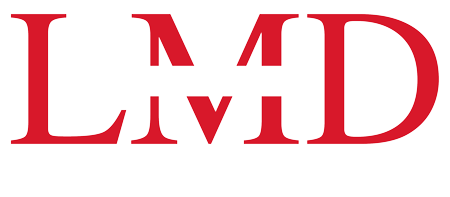Failed bailout review raises stakes of Wickremesinghe’s upcoming trip to Beijing
COLOMBO — Sri Lanka’s diplomatic failure to secure a concrete debt relief framework from China, its largest bilateral lender, is blocking access to desperately needed cash under a $3 billion bailout from the International Monetary Fund.
A visit by IMF officials last month highlighted once again the bankrupt South Asian nation’s slow progress in restructuring its external debt. The fund, which has insisted on “financing assurances” from bilateral lenders as a key pillar, gave Sri Lanka a failing grade in the first review of the bailout, denying it a second tranche of $330 million in aid.
Now the stakes are rising for an expected mid-October visit to China by President Ranil Wickremesinghe to attend a 10th anniversary summit of the Belt and Road Initiative, Beijing’s regionwide infrastructure building program. Wickremesinghe, government sources say, is due to meet Chinese President Xi Jinping to discuss debt relief.
In its statement on the review, the IMF did not point fingers. But multiple diplomatic sources from Asian and Western missions in Colombo told Nikkei Asia that China’s foot-dragging on Sri Lanka’s debt was an issue.
The fund did say that a green light for additional aid “requires the completion of financing reviews,” after scrutinizing the country’s record since the first injection of $330 million was approved in late March.
“These financing assurances reviews will focus on whether adequate progress has been made with debt restructuring to give confidence that it will be concluded in a timely manner and in line with the program’s debt target,” said the IMF team, headed by Peter Breuer, senior mission chief for Sri Lanka.
China was the last bilateral creditor to join lenders like Japan and India early this year to offer initial financial assurances that met the IMF’s conditions to approve the March bailout, an Asian diplomat revealed. “Beijing offered a two-year moratorium for the Sri Lankan debt and talked of providing new loans to pay for existing debt,” the source said on condition of anonymity.
But China balked at an April invitation to join a committee of Sri Lanka’s bilateral creditors chaired by Japan, India and France, aimed at drafting an external debt restructuring framework. Beijing opted to deal directly with the Sri Lankan government.
“The other lenders were OK with this arrangement and were prepared to let Colombo deal with Beijing at a bilateral level,” the diplomat added. “But there cannot be any special deals favoring Chinese debt terms, such as no haircuts, yet expecting haircuts from the other countries.”
Wickremesinghe — who stepped into the role of president in the middle of last year — has assured bilateral lenders of equal treatment. The incumbent then, Gotabaya Rajapaksa, had fled in the wake of unprecedented street protests driven by public anger over the collapsed economy.
“We will not have separate deals,” Wickremesinghe told Nikkei Asia in an interview in Tokyo in May. “We won’t give advantage to one party, we will work on the same principles.”

A meeting of Sri Lanka’s creditor nations held online in May was attended by 26 countries. Many were from the Paris Club, a network of wealthy nations that have a history of resolving external debt crises in developing countries to which they have given loans. China stood by only as an observer.
Within the group of countries besides China, diplomatic sources familiar with the talks revealed that concrete progress on a blueprint and timeline is still elusive. “Nothing has moved concretely within the Japan-India-French creditor committee because of no progress from China,” said one source. “So we will be following President Ranil’s visit to China closely.”
Consequently, the scope of Sri Lanka’s debt to China remains under scrutiny.
Sri Lanka ran out of foreign reserves at the end of 2021 to pay for its imports and faced pressure to service a $7 billion external debt the next year, pushing it to the brink of the worst economic crisis since independence in 1948.
By 2021, public debt stood at 114% of gross domestic product — 47% of it in the form of foreign loans, with private creditors who had bought international sovereign bonds topping that list, followed by bilateral lenders led by China.
In May 2022, Sri Lanka became the first Asian lower-middle income country to default on its sovereign debt this century.
Chinese loans had financed a spree of large infrastructure projects, including highways, an airport and a port. “China will have to play a major role in Sri Lanka’s debt restructuring process, with $7.4 billion or 19.6% of outstanding public debt owed to China at the end of 2021,” wrote Umesh Moramudali and Thilina Panduwawala, two Sri Lankan economists, in “Evolution of Chinese Lending to Sri Lanka since the mid-2000s — Separating Myth from Reality.”
Their November 2022 study, published by the U.S.-based Johns Hopkins University, observed that “China’s approach to Sri Lanka’s debt restructuring and the extent of debt relief offered will set a precedent for China’s role and behavior in other countries.”
Chinese lending to Sri Lanka mainly came from two major policy banks, China Exim Bank, which accounted for $4.3 billion, and China Development Bank, which gave $3 billion.
By contrast, interest-free loans provided directly to Sri Lanka as part of official aid from the Chinese government amounted to only $16 million by the end of 2021, said the Sri Lankan economists Moramudali and Panduwawala in an e-mail interview. “We have not come across EXIM or CDB loans that are interest-free.”
China’s opaque response to Sri Lanka’s restructuring effort has many questioning its motives.
“China appears to be taking a strategic approach rather than pursuing the Sri Lanka case from a financial position,” said Manjuka Fernandopulle, a Sri Lankan commercial lawyer advising Sri Lanka’s sovereign bond holders. “It is trying to provide an extra level of protection to its major lenders — EXIM and CDB.”
